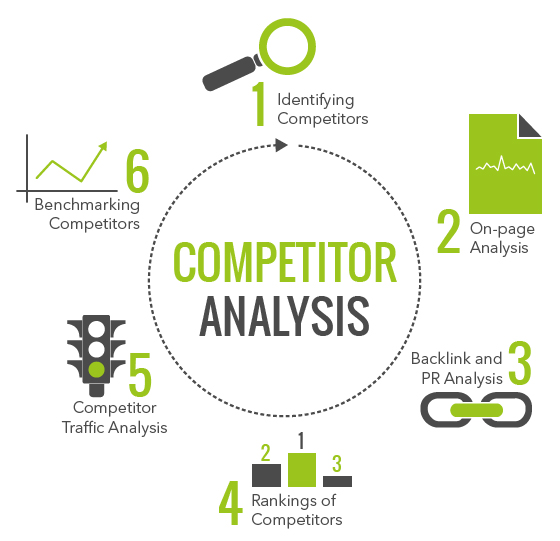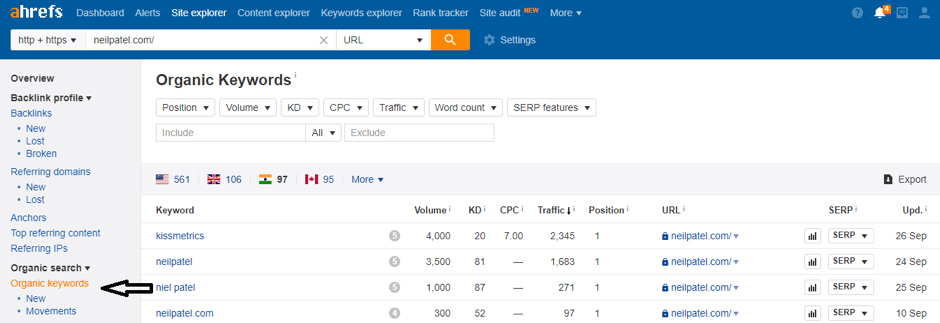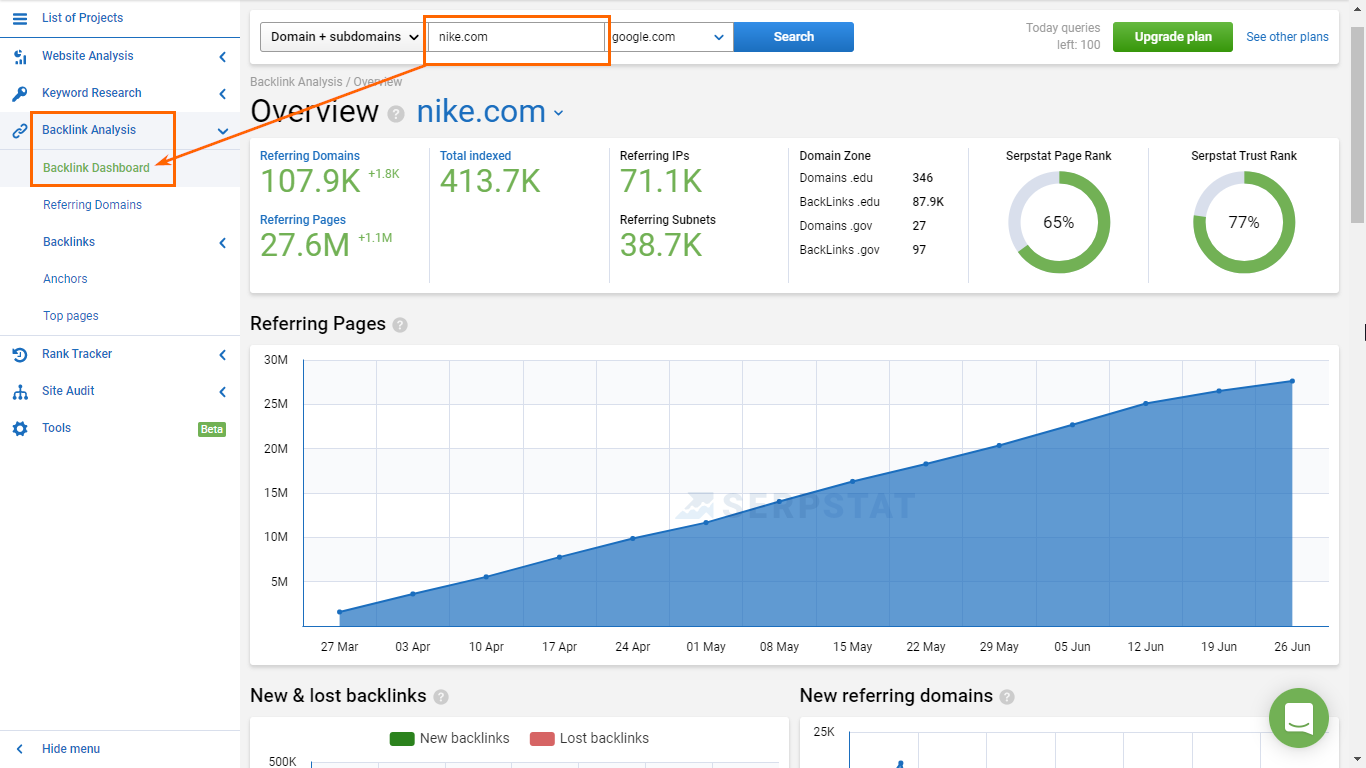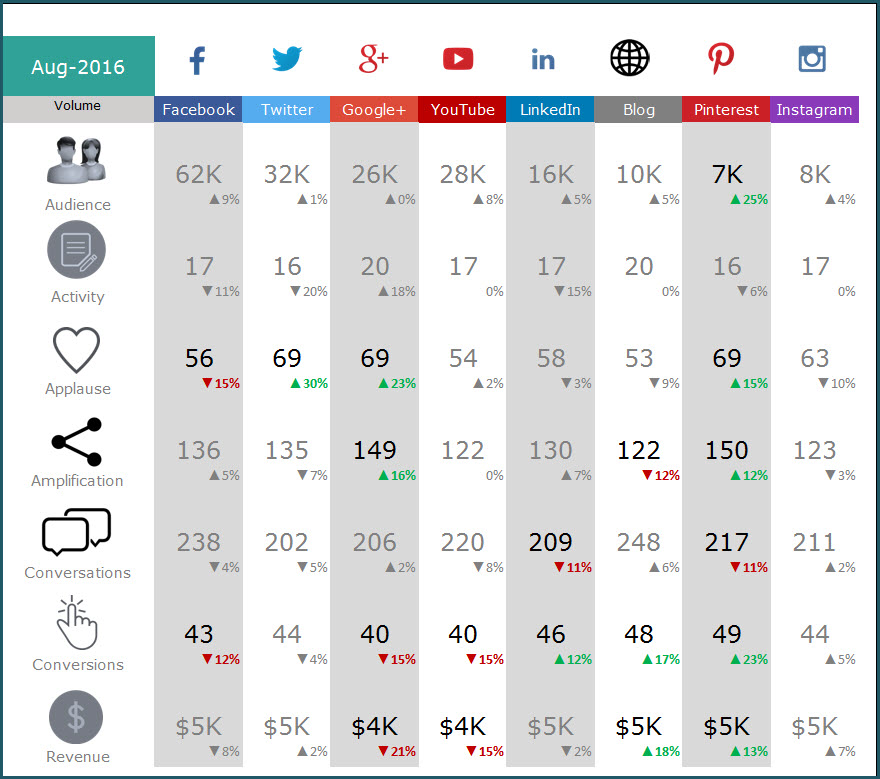
Competitive analysis is one of the first stages of building a strong SEO campaign.
To beat the competition, you should keep your eyes on your competitors. Tracking competitors’ keyword rankings, campaign content, social and brand mentions, and other digital marketing strategies help your social media and content teams to collaborate better on the campaign and communication.
SEO competitive analysis will show you what your competitor is doing and how you can emulate or beat those strategies to dominate the search engine rankings and boost your brand’s growth.
Below are the three reasons why competitor analysis is essential:
- You can find link opportunities
- You can find strategic advantages
- You can see where they’re doing well
It’s time to investigate your competitors :
1. Find the Target Keywords:
The first step is to identify the targeting keywords of your competitors. The precise way to find their target keywords is to use Ahref tool.
Follow the below steps to find your competitor’s keywords with Ahref:
a.) Enter your competitor’s link into the search bar of Ahref:

b.) Click on organic keywords link under the Organic Research section:

c.) See what keywords are ranking for your competitor:

2. Perform Content Analysis
As everyone understands, content is the king of SEO Services. Pages with high-quality content rank better in search engine results. You need to research your competitor’s content marketing strategy to analyze several different game-changing elements of their content strategy.

Eventually, our focus should be on creating more relevant and researched content compared to the one already ranking higher for our targeted keyword on the SERP.
a.) Word Count & Readability
What should be the length of the content on each page? How should the content be displayed? Whether it should be easy to digest or just a muddled mess of words?
Long-form SEO content tends to do well in Google. For that, you can use the “keyword density tool” to find the word length of your competitor’s pages.
b.) Keyword Density & Relevance
Review the meta tags, are they using keywords in the title, description, header tag, and in the image Alt tags? How many times are they using keywords in the content body?
c.) Blog Articles
Search what kind of blogs and articles they are publishing and where?
3. Off-Site Elements
a.) Search Number of Backlinks and Referring Domains:
Check the number of backlinks and referring domains pointing to each page of the competition’s website. What is the ratio of domains to the backlinks?

It is recommended to have a higher number of unique and quality domains pointing to your site, so the proportion remains minimum.
b.) Links Authority:
Look at the average authority of your backlinks compared to your competition. While the quantity of links is essential, you need to ensure the quality as well.
c.) Links Types :
It would be better if you mix-up your plays to keep the competition guessing, that means you should build different kinds of links to your site. You want a good mix of links, from contextual to images. If you only have one type of links, it won’t appear natural, and you won’t be able to make any progress.
Check how does the variety of your links compare to your competition?
d.) Anchor Text :
Just like different types of links, you also need to take care of the anchor text for the effective SEO strategy. Find what your competitors are using as their top anchor text? Is it a mix of branded terms, long-tail terms, or the exact matches?
4. Analyze Website Design
If your competition has a beautiful UI/UX design, then you also might need to invest some money into your website to make it appealing to the users.

Many organizations still have sites that are not mobile-friendly, and even their designs are still outdated (they appear as they are from 1995). But such websites are still performing well on the search engines, and it is a brilliant opportunity for you to swoop in and win the fight with better web design and content strategy.
5. Analyse Competitors Social Media Profile :
You can’t overlook the effect social media has on SEO.

Check their number of followers?
Take a look at the top social networks and see how many followers each of your competitors have? How does your audience compare?
a.) Post Frequency
How often is your competition posting? Are you able to compete? See the type of content they’re posting and see if you can one-up them on quality.
b.) Engagement
A company may have a significant audience, may even post frequently, but it’s all for nothing if the crowd isn’t engaging with the content.
6. Compare Google My Business Page:
Analyzing competition’s Google My Business page applies more to local businesses.

In this investigation, you’re trying to find:
Is their page refreshed or updated all the time?
Do their posts have an engagement?
Do they have pictures or videos?
How many reviews are there?
Are individuals following the site pages?
Record your finding for each competitor and compare them to your site in each category.
When you know all about your competition, You’ll be able to take apart their defensive line up and score a touchdown every time.
Promotion By: Seo Company in New York
No comments:
Post a Comment